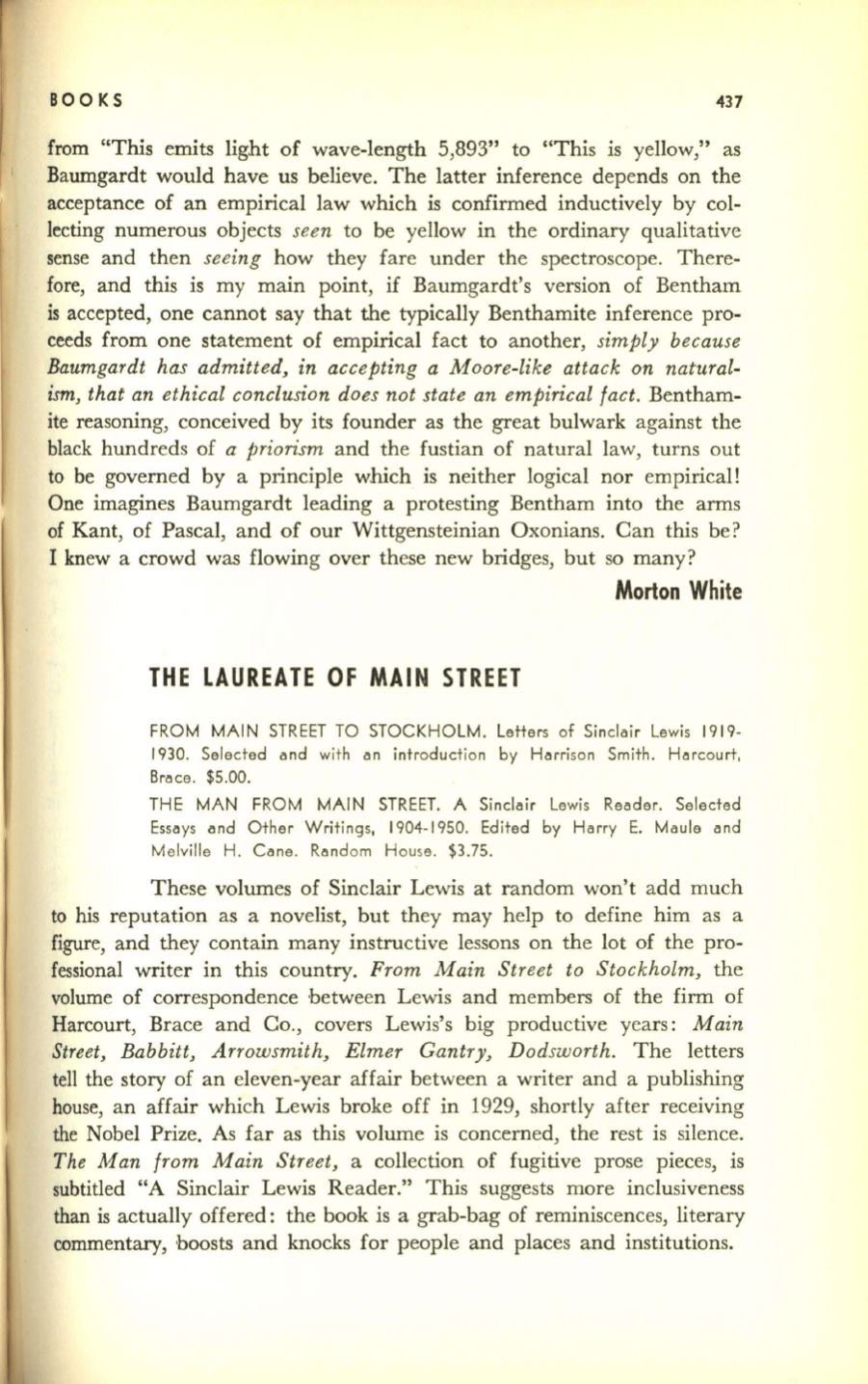
BOOKS
437
from "This emits light of wave-length 5,893" to "This is yellow," as
Baumgardt would have us believe. The latter inference depends on the
acceptance of an empirical law which is confirmed inductively by col–
lecting numerous objects
seen
to be yellow in the ordinary qualitative
sense and then
seeing
how they fare under the spectroscope. There–
fore, and this is my main point, if Baumgardt's version of Bentham
is
accepted, one cannot say that the typically Benthamite inference pro–
ceeds from one statement of empirical fact to another,
simply because
Baumgardt has admitted, in accepting a Moore-like attack on natural–
ism, that an ethical conclusion does not state an empirical fact.
Bentham–
ite reasoning, conceived by its founder as the great bulwark against the
black hundreds of
a priorism
and the fustian of natural law, turns out
to be governed by a principle which is neither logical nor empirical!
One imagines Baumgardt leading a protesting Bentham into the arms
of Kant, of Pascal, and of our Wittgensteinian Oxonians. Can this be?
I knew a crowd was flowing over these new bridges, but so many?
Morton White
THE LAUREATE OF MAIN STREET
FROM MAIN STREET TO STOCKHOLM. Letters of Sinclair Lewis 1919·
1930. Selected and with an introduction by Harrison Smith. Harcourt,
Brace. $5.00.
THE MAN FROM MAIN STREET. A Sinclair Lewis Reader. Selected
Essays and Other Writings, 1904·1950. Edited by Harry E. Maule and
Melville H. Cane. Random House. $3.75.
These volumes of Sinclair Lewis at random won't add much
to his reputation as a novelist, but they may help to define him as a
figure, and they contain many instructive lessons on the lot of the pro–
fessional writer in this country.
From Main Street to Stockholm,
the
volume of correspondence between Lewis and members of the firm of
Harcourt, Brace and Co., covers Lewis's big productive years:
Main
Street, Babbitt, Arrowsmith, Elmer G.antry, Dodsworth.
The letters
tell the story of an eleven-year affair between a writer and a publishing
house, an affair which Lewis broke off in 1929, shortly after receiving
the Nobel Prize. As far as this volume is concerned, the rest is silence.
The Man from Main Street,
a collection of fugitive prose pieces, is
subtitled "A Sinclair Lewis Reader." This suggests more inclusiveness
than
is
actually offered: the book is a grab-bag of reminiscences, literary
commentary, boosts and knocks for people and places and institutions.


